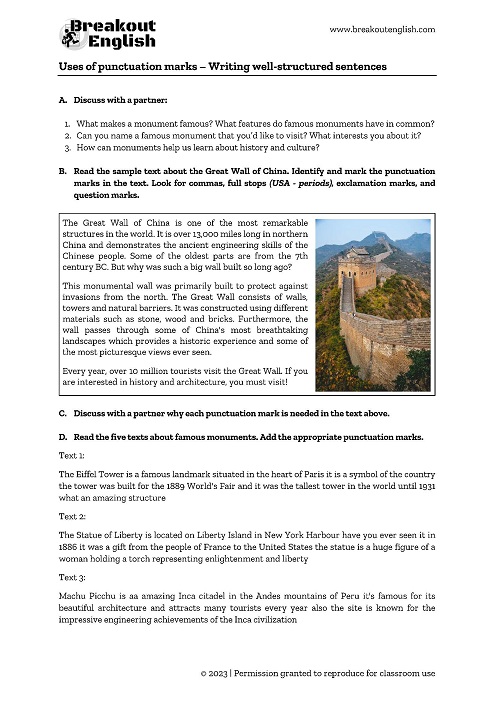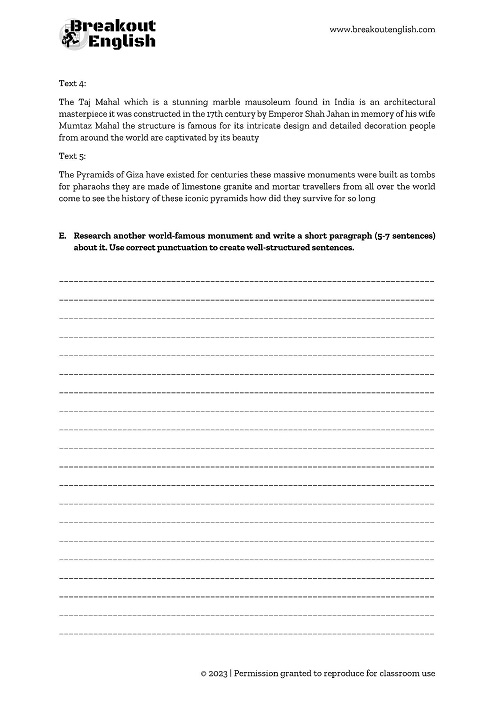I have long suspected that students may not have ever learnt the correct uses of punctuation marks in their 1st languages. If they don’t know it in one language, why would they be able to transfer this skill to English? I recently asked a teenage student if they ever wrote essays or long writings in their 1st language, and they answered, “not really.” Turns out my suspicions were correct. If you, like me, want to work on this in class, there is a free downloadable uses of punctuation marks pdf below.

Contents
Use of punctuation marks in English
When you’re learning a new language, you often focus on grammar, vocabulary, pronunciation, or other skills. There is never much focus on punctuation. However, punctuation varies in different languages. I am fortunate enough to live in Spain. I’ve encountered official documents which seem to string together sentences with commas in some type of bizarre legalese. The English teacher inside me screams when I see an extensive paragraph written in one sentence, even if it is a paragraph about mortgages.
For language learners, there are only four punctuation marks that I’m concerned about. They are full stops (or periods for my American friends), question marks, exclamation marks and commas.
“But what about colons and semicolons?” asks one student in every class ever.
My recommendation is to not use them. They are often unnecessary. If you are planning on studying linguistics or becoming a published author, learn about them. However, if you just need to write an essay for IELTS, Cambridge or another exam, steer clear.
Full stops (periods), question marks, exclamation marks and commas.
Take a look at the text below. It’s got punctuation! Punctuation helps to keep it organised. These can be long sentences, which help to describe something in detail and provide lots of opportunity for elaborate language. Or they can be short sentences. Both options are viable. Both options are correct. The important thing is to use punctuation and to use it well.
Think about the use of punctuation marks in the text and why we use each one. How do they help to write well-structured sentences?

- Full stops: used to mark the end of a sentence
- Question marks: used to mark the end of a question
- Exclamation marks: used to mark the end of a sentence that requires emphasis
- Commas: used to…
- separate items in a list (note: in US English a comma is also required before the word “and” in a list)
- separate connected independent clauses (they could exist alone, but are connected with a linking word)
- separate introductory word or phrase
- separate subordinate clauses
Materials
If you’re looking for a more detailed explanation of the text above, or you want to practise uses of punctuation marks in your English classes, download the worksheet below. It includes different activities to practise punctuation. Trust me, if you use correct punctuation, it will help your writing score in exams too!
It’s on the topic of famous monuments around the world, so it will fit into a unit about travel nicely. Or just use it as an independent lesson.
EXAM PART: Writing
EXAM SKILLS: Organisation, language
TIME: 30-45 minutes
PREPARATION: One copy of the worksheet per student
Download




